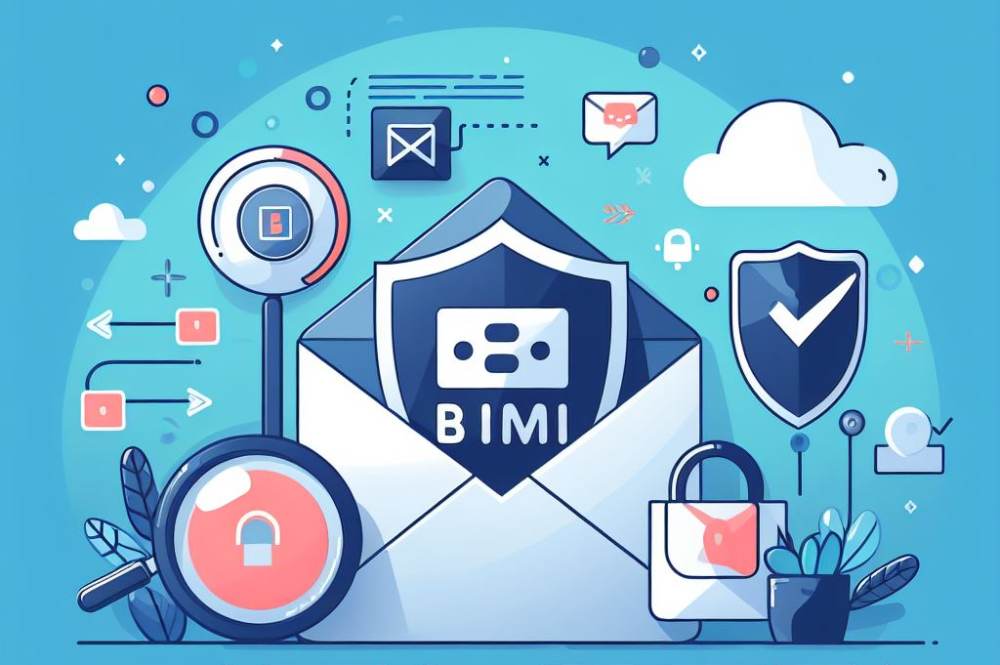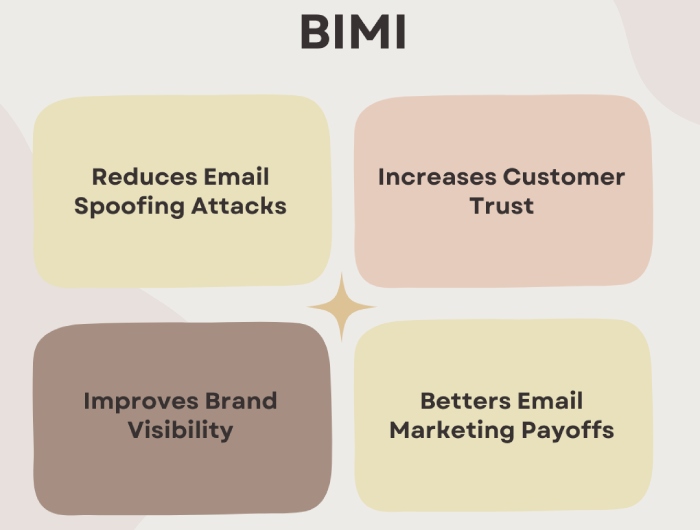Did you know that over 300 billion emails were sent each day in 2022, and this figure is expected to reach 392.5 billion by 2026? With billions of emails sent each day, how do you ensure that yours stands out from the crowd or that the recipient actually opens them?
We hate to disappoint you, but there is no sure-shot strategy to ensure 100% success. But there exists an emerging email standard— Brand Indicators for Message Identification (BIMI) that enhances your brand recognition and helps your clients identify and open your email from the pool of messages in their inbox.
In this article, we’ll dive into the basics of BIMI and explore how this security technology can help you reinforce your brand identity and enhance email deliverability and security. That is not all! We’ll also take you through the entire process of implementing BIMI.
What is BIMI?
We are sure you receive a ton of marketing emails from various brands on a daily basis. But how do you identify a particular brand from another without necessarily opening the email? In most cases, the logo next to the sender’s name is the giveaway. Thanks to Brand Indicators for Message Identification (BIMI), recipients can now identify legitimate emails from trusted sources in their inbox.
With BIMI, a brand’s logo is prominently displayed in the recipient’s email client, serving as a visual cue to reiterate brand identity. Sounds like every email marketer’s dream? Well, there is more to BIMI than just brand recognition; it also addresses email security concerns.
Executed as an extension to DMARC, this email authentication technique can be leveraged to prevent grave email-based cyber attacks such as spoofing, phishing, and other fraudulent email activities.
Why is BIMI Crucial for Businesses?
Your logo is an integral aspect of creating a cohesive brand, especially in times when major communication is executed from behind the screens through emails. In the realm of email marketing, even a minute detail like incorporating your brand logo in your emails can make a significant difference and help you stand out from the crowd. In this vein, BIMI plays a pivotal role in elevating email engagement and establishing a positive sender reputation.
The visual authenticity offered by BIMI by showcasing your brand’s logo has the potential to entice the receivers to open the emails and engage with them. Apart from increasing user engagement, the authentication standard also helps organizations improve their sender reputation. As mailbox providers evaluate the trustworthiness of domains and IP addresses, the adoption of BIMI serves as an additional affirmative signal, potentially enhancing your overall email deliverability.
How to Implement BIMI?
While BIMI might only serve as a visual indicator of your business, implementing BIMI takes more than simply uploading your logo on the server.
Since BIMI operates on the framework of email authentication standards, it is imperative to authenticate your domain with Sender Policy Framework (SPF), DomainKeys Identified Mail (DKIM), and Domain-based Message Authentication, Reporting, and Conformance (DMARC) to ensure that your receivers are able to identify your emails by simply looking at the logo.
Here is a step-by-step breakdown of Brand Indicators for Message Identification (BIMI) works:
Verify the Email Authentication Protocols on the Sending Domain:
When employing BIMI for email communications, the receiving mail server initiates the standard SPF, DKIM, and DMARC authentication processes. If the email successfully passes these authentication tests, the server proceeds to verify the presence of a valid BIMI record. It is only when the BIMI record is successfully validated the server will display your brand logo in the recipient’s email client. The entire process of authentication and validation ensures an added layer of legitimacy and security.
Set DMARC Policy to Quarantine or Reject
To implement BIMI effectively, it is recommended to set the DMARC policy to at least “Quarantine” or preferably “Reject.” Doing this filters out the fluff and ensures that only legitimate emails make their way into the recipient’s inbox. This reduces the likelihood of illegitimate emails disguised in the garb of a trusted entity and the subsequent possibility of phishing attacks.
Select Your Logo
Once your DMARC is properly configured, it is time to upload your brand’s logo to the DNS server. But before you do that, make sure that your logo meets the following criteria:
- in SVG P/S format
- the file is less than 32KB
- is square
- Has a solid background
Procure a VMC for Your Logo
If you want your logo to appear in Gmail, it is recommended to get your Verified Mark Certificate (VMC) set up with certification authorities such as DigiCert or Entrust.
Publish a BIMI Record to the DNS
To publish a BIMI record on the DNS, you have to create a TXT record that includes the version and the URL where your BIMI-authenticated logo, in SVG format, is hosted.
For instance, in the record “default._bimi.[domain] IN TXT “v=BIMI1; l=[SVG URL]; a=[PEM URL];” you can customize the domain name, the SVG URL (where your logo is hosted), and the PEM URL (where the VMC is hosted).
To Sum Up
Now that you know that sliding into your clients’ email is no easy feat, it’s time to up your email marketing game with BIMI!
Being the only authentication standard that is visible to the receiver, BIMI offers a palpable representation of brand identity and builds an unmatched sense of trust. Although BIMI is a relatively new approach to email authentication, major providers are now encouraging its implementation, and considering the evolving complexity of the digital landscape, it’d soon become a mandatory practice, just like DMARC!
That being said, embracing BIMI can prove to be a strategic move for businesses seeking to fortify their brand presence, build trust with recipients, and navigate the dynamic challenges of email security effectively.
Are you prepared to enhance your organization’s email security and continuously monitor incoming emails as part of your cybersecurity strategy? Get in touch with our team of experts at DuoCircle and learn more about BIMI today!


